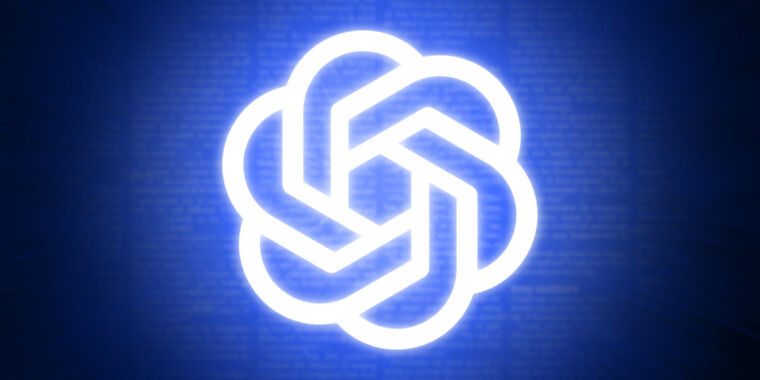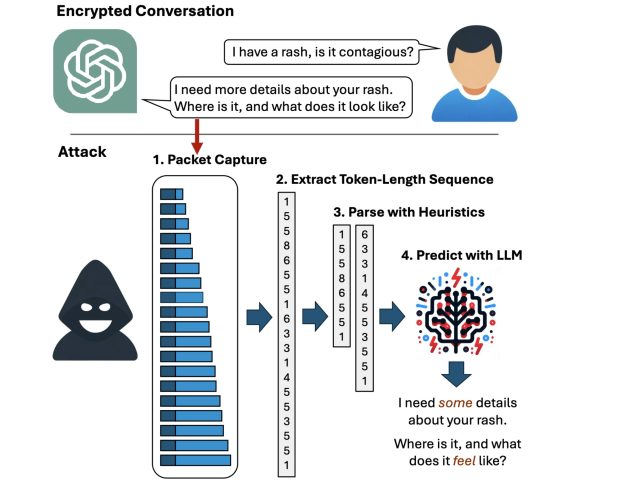OpenAI hits Google where it hurts with new SearchGPT prototype
Cutting through the sludge —
New tool may solve a web-search problem partially caused by AI-generated junk online.

Benj Edwards / OpenAI
Arguably, few companies have unintentionally contributed more to the increase of AI-generated noise online than OpenAI. Despite its best intentions—and against its terms of service—its AI language models are often used to compose spam, and its pioneering research has inspired others to build AI models that can potentially do the same. This influx of AI-generated content has further reduced the effectiveness of SEO-driven search engines like Google. In 2024, web search is in a sorry state indeed.
It’s interesting, then, that OpenAI is now offering a potential solution to that problem. On Thursday, OpenAI revealed a prototype AI-powered search engine called SearchGPT that aims to provide users with quick, accurate answers sourced from the web. It’s also a direct challenge to Google, which also has tried to apply generative AI to web search (but with little success).
The company says it plans to integrate the most useful aspects of the temporary prototype into ChatGPT in the future. ChatGPT can already perform web searches using Bing, but SearchGPT seems to be a purpose-built interface for AI-assisted web searching.
SearchGPT attempts to streamline the process of finding information online by combining OpenAI’s AI models (like GPT-4o) with real-time web data. Like ChatGPT, users can reportedly ask SearchGPT follow-up questions, with the AI model maintaining context throughout the conversation.
Perhaps most importantly from an accuracy standpoint, the SearchGPT prototype (which we have not tested ourselves) reportedly includes features that attribute web-based sources prominently. Responses include in-line citations and links, while a sidebar displays additional source links.
OpenAI has not yet said how it is obtaining its real-time web data and whether it’s partnering with an existing search engine provider (like it does currently with Bing for ChatGPT) or building its own web-crawling and indexing system.
A way around publishers blocking OpenAI
ChatGPT can already perform web searches using Bing, but since last August when OpenAI revealed a way to block its web crawler, that feature hasn’t been nearly as useful as it could be. Many sites, such as Ars Technica (which blocks the OpenAI crawler as part of our parent company’s policy), won’t show up as results in ChatGPT because of this.
SearchGPT appears to untangle the association between OpenAI’s web crawler for scraping training data and the desire for OpenAI chatbot users to search the web. Notably, in the new SearchGPT announcement, OpenAI says, “Sites can be surfaced in search results even if they opt out of generative AI training.”
Even so, OpenAI says it is working on a way for publishers to manage how they appear in SearchGPT results so that “publishers have more choices.” And the company says that SearchGPT’s ability to browse the web is separate from training OpenAI’s AI models.
An uncertain future for AI-powered search
OpenAI claims SearchGPT will make web searches faster and easier. However, the effectiveness of AI-powered search compared to traditional methods is unknown, as the tech is still in its early stages. But let’s be frank: The most prominent web-search engine right now is pretty terrible.
Over the past year, we’ve seen Perplexity.ai take off as a potential AI-powered Google search replacement, but the service has been hounded by issues with confabulations and accusations of plagiarism among publishers, including Ars Technica parent Condé Nast.
Unlike Perplexity, OpenAI has many content deals lined up with publishers, and it emphasizes that it wants to work with content creators in particular. “We are committed to a thriving ecosystem of publishers and creators,” says OpenAI in its news release. “We hope to help users discover publisher sites and experiences, while bringing more choice to search.”
In a statement for the OpenAI press release, Nicholas Thompson, CEO of The Atlantic (which has a content deal with OpenAI), expressed optimism about the potential of AI search: “AI search is going to become one of the key ways that people navigate the internet, and it’s crucial, in these early days, that the technology is built in a way that values, respects, and protects journalism and publishers,” he said. “We look forward to partnering with OpenAI in the process, and creating a new way for readers to discover The Atlantic.”
OpenAI has experimented with other offshoots of its AI language model technology that haven’t become blockbuster hits (most notably, GPTs come to mind), so time will tell if the techniques behind SearchGPT have staying power—and if it can deliver accurate results without hallucinating. But the current state of web search is inviting new experiments to separate the signal from the noise, and it looks like OpenAI is throwing its hat in the ring.
OpenAI is currently rolling out SearchGPT to a small group of users and publishers for testing and feedback. Those interested in trying the prototype can sign up for a waitlist on the company’s website.
OpenAI hits Google where it hurts with new SearchGPT prototype Read More »



